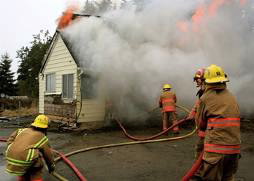EMBARGOED FOR RELEASE | March 27, 2012
Some flame retardants make fires more deadly
Note to journalists: Please report that this research was presented at a meeting of the American Chemical Society
SAN DIEGO, March 27, 2012 — Some of the flame retardants added to carpets, furniture upholstery, plastics, crib mattresses, car and airline seats and other products to suppress the visible flames in fires are actually increasing the danger of invisible toxic gases that are the No. 1 cause of death in fires. That was the finding of a new study presented here today at the 243rd National Meeting & Exposition of the American Chemical Society (ACS), the world’s largest scientific society.
Anna A. Stec, Ph.D., led the research, which focused on the most widely-used category of flame retardants, which contain the chemical element bromine. Scientists term these “halogen-based” flame retardants because bromine is in a group of elements called halogens.
Media Contact
During the meeting, March 23-28, the contacts can be reached at 619-525-6268.
Michael Bernstein
202-872-6042
m_bernstein@acs.org
Michael Woods
202-872-6293
m_woods@acs.org
“Halogen-based flame retardants are effective in reducing the ignitability of materials,” Stec said. “We found, however, that flame retardants have the undesirable effect of increasing the amounts of carbon monoxide and hydrogen cyanide released during combustion. These gases, not the thermal effects of burns on the body, are the No. 1 cause of fire deaths.” Stec, who is with the University of Central Lancashire, Centre for Fire and Hazards Science, Lancashire, U.K., spoke at an ACS symposium on “Fire and Polymers,” which included 60 presentations.
Almost 10,000 deaths from fires occur in industrialized countries worldwide each year, including about 3,500 in the U.S. Contrary to popular belief, inhalation of toxic gases released by burning materials –– not burns –– causes the most deaths and most of the serious injuries. Stec’s team set out to determine the effects of flame retardants on the production of those gases. The scientists tested brominated flame retardants with antimony synergists, mineral-based flame retardants and so-called intumescent agents, which swell when heated, forming a barrier that flames cannot penetrate.
Unlike the halogen-based retardants, mineral-based fire retardants have little effect on fire toxicity. Most intumescent fire retardants reduce the amount of potentially toxic gases released in a fire.
To automatically receive news releases from the American Chemical Society contact newsroom@acs.org.
###

of deadly gases in house fires and in other
structures.

